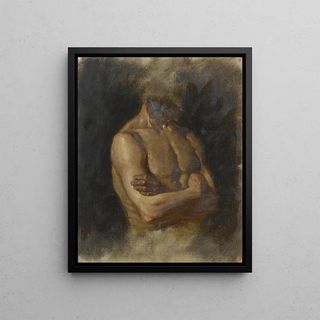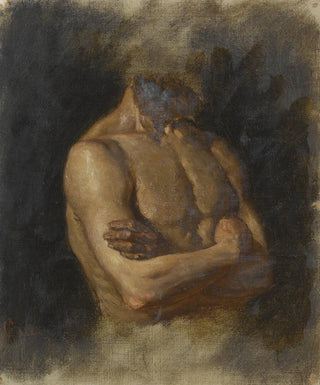Art print | Nude study - Gustaf Cederström


View from behind

Frame (optional)
Art print Study of the nude - Gustaf Cederström – Captivating introduction
In the fascinating universe of art, some works transcend time and space, captivating minds and awakening emotions. "Study of the nude - Gustaf Cederström" is one of those iconic pieces that, through its apparent simplicity, reveals an unsuspected depth. This artwork, where the beauty of the human body is highlighted with rare delicacy, invites the viewer to introspective contemplation. Cederström, as an artist, manages to combine technique and sensitivity, offering a unique vision of the human form. The piece, through its nuances and lighting, seems almost alive, as if the model could animate under the attentive gaze of the observer.
Style and uniqueness of the work
The originality of "Study of the nude" lies in how Cederström approaches the representation of the body. The artist does not merely reproduce a silhouette; he explores the play of light and shadow, emphasizing contours and volumes with remarkable precision. Every curve, every muscle is rendered with such finesse that the work seems to emanate palpable sensuality. The color palette chosen by Cederström, soft and harmonious, helps create an atmosphere that is both soothing and captivating. The piece also stands out for its academic approach, demonstrating technical mastery that echoes the great masters of classical painting. Thus, "Study of the nude" fits within a tradition while asserting a distinct identity, where the art of representation becomes a celebration of human beauty.
The artist and his influence
Gustaf Cederström, Swedish painter of the 19th century, established himself as an essential figure of his time. Trained in the ateliers of great masters, he developed a style that combines academic rigor and personal sensitivity. His artistic journey is marked by a deep interest in the human body, which he considers a noble subject worthy of celebration. Cederström was also influenced by the artistic movements of his era, integrating elements of realism and symbolism into his works. His ability to capture the essence of his subjects, while maintaining a certain

Matte finish

View from behind

Frame (optional)
Art print Study of the nude - Gustaf Cederström – Captivating introduction
In the fascinating universe of art, some works transcend time and space, captivating minds and awakening emotions. "Study of the nude - Gustaf Cederström" is one of those iconic pieces that, through its apparent simplicity, reveals an unsuspected depth. This artwork, where the beauty of the human body is highlighted with rare delicacy, invites the viewer to introspective contemplation. Cederström, as an artist, manages to combine technique and sensitivity, offering a unique vision of the human form. The piece, through its nuances and lighting, seems almost alive, as if the model could animate under the attentive gaze of the observer.
Style and uniqueness of the work
The originality of "Study of the nude" lies in how Cederström approaches the representation of the body. The artist does not merely reproduce a silhouette; he explores the play of light and shadow, emphasizing contours and volumes with remarkable precision. Every curve, every muscle is rendered with such finesse that the work seems to emanate palpable sensuality. The color palette chosen by Cederström, soft and harmonious, helps create an atmosphere that is both soothing and captivating. The piece also stands out for its academic approach, demonstrating technical mastery that echoes the great masters of classical painting. Thus, "Study of the nude" fits within a tradition while asserting a distinct identity, where the art of representation becomes a celebration of human beauty.
The artist and his influence
Gustaf Cederström, Swedish painter of the 19th century, established himself as an essential figure of his time. Trained in the ateliers of great masters, he developed a style that combines academic rigor and personal sensitivity. His artistic journey is marked by a deep interest in the human body, which he considers a noble subject worthy of celebration. Cederström was also influenced by the artistic movements of his era, integrating elements of realism and symbolism into his works. His ability to capture the essence of his subjects, while maintaining a certain






